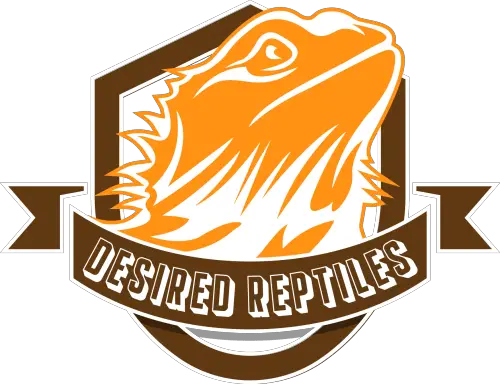“Should I get a bearded dragon?” and “Will bearded dragons make good pets?” are top-tier praiseworthy questions anyone should ask before setting out to adopt a beardie- and we love to answer them! Whether a bearded dragon will make a good pet for you depends on how well you’d care for them. I know, it’s a little ‘fore-frontish’, but that’s the best way to describe the situation.
At the very least, you deserve a pat on the back for taking the time to do the research.
Bearded dragons make wonderful pets. They’re docile, well-behaved, and laid-back lizards known to be mostly welcoming to their new family and safe to pair with children. As long as you have the funds and time to provide them with the best care possible, you’ll enjoy the company of your pet just as it will enjoy yours.
In a case where an unprepared parent adopts a bearded dragon, both parties suffer. But of course, the beardies take the rotten end of the deal! Nevertheless, anyone of the appropriate age can adopt one if they can provide a comfortable and safe environment for them to thrive.
In this article, I’ll be listing seven pros and six cons of owning a beardie, including four expert tips on how to begin your journey. Leggo!

7 Amazing Pros Of Owning A Bearded Dragon
Keeping a bearded dragon as a pet is no easy business, but it sure is generously rewarding. Here are the 7 good reasons why beardies make terrific scaly friends:
1. They Are Easy To Find For Adoption
Bearded dragons are one of the simplest reptile pets to find and adopt in the United States. While they don’t import them from their natural habitat Australia anymore, they have been bred for decades and are now habituated in the USA, Western Europe, and Canada.
However, it can be a tedious process if you’re transporting them intercontinental as you must meet several standards set by the United States Fish And Wildlife Service (USFWS). Also, be sure to check in with your Bureau For Animal Industry where you reside for the legal requirements regarding animal imports to make sure you are fully allowed and prepared to house your bearded dragon.
Disclaimer: don’t think you’re entitled to capturing a bearded dragon from the wild if you’re in Australia! There are strict laws protecting the lizards and you will be penalized for breaking them. You must follow due processes, which is easier if you’re adopting within Australia and the US where they’re bred, to own your pet dragon.
2. They Don’t Mind Handling (Safe for kids)
Unlike other reptiles, some bearded dragons specifically love to be handled (with care). They are cold-blooded creatures that sometimes need an extra source of warmth, and what’s a better way to stay cozy besides snuggling with their warm-bodied giant friends?
Sometimes, when they get really comfy with their humans, they can nestle into crevices like necks, armpits, and even belly rolls for a power nap. As long as you know how to handle them, you and your scaly friend will bond in no time.
If you have kids around and are a little bothered about how that will play out with your bearded dragon, I suggest you take things a little slower to build trust. Children can be bundles of excitement, and although we wouldn’t want them any other way, it could throw off the tranquil nature of your beardie and complicate the situation.
3. They Live Long, Happy Lives
Like their cuddly nature and docility weren’t enough, you get to grow through life with your beardie for 12 to 15 years! The oldest bearded dragon to live, Sebastien, garnered 18 good healthy years. Who knows? Your pet might outlive that age and set a record with suitable and consistent care.
4. They’re Fairly Neat & Tidy
Keeping pets comes with every sort of mess imaginable– it’s something you just can’t avoid. Cats and dogs will shred and maul anything, leaving us with the consequences. But with bearded dragons, you don’t have to worry about those scenarios. They aren’t concerned about your delectable new couch or your delicious pair of shoes.
However, poor living conditions and inadequate hygiene like failure to remove uneaten food from the enclosure or to change the substrate will induce bacteria that excrete smelly gasses, and thus, stink up your home. Which is almost unbearable because beardie poop smells like death! So, proper hygiene is mandatory.
5. Bearded Dragons Have Different Personalities
Who said bearded dragons have no emotions? Someone without experience whatsoever with beardies! Just like other pets, your dragon will have a unique personality; they may prefer a particular diet to another, prefer to be lazy and sleep through the whole day in their enclosure, be highly active, be a little more friendly, or be a feisty little pancake in comparison to another bearded dragon.
Many pet owners may enjoy this part a little less, but I found the process of bonding with my dragon highly rewarding. It may need extra patience in some cases, but eventually, it will leave a positive mark on you and your beardie’s experience in general.
6. There Are Various Dragons To Choose From
Beardies come in all sorts of colors and shapes; this category is known as morphs. This allows uniqueness to thrive for you as an individual. However, morphs do cost an extra handful of cash, but they’re worth every dime.
7. They’re Not Noisy
While this might pass as nothing to consider, some people prefer to relax in solitude but still enjoy the company of their pets. In cases where a parrot, wailing cat, or barking dog doesn’t suit, the bearded dragon is your best bet.

6 Major Cons Of Owning A Bearded Dragon
Every pet has pros and cons to keeping them, and bearded dragons are no exception. While the proportion of downsides experienced is relative, here are the most generalized and prominent problems with keeping pet beardies:
1. The Crippling Expense Of Housing
The cost of providing a miniature arid habitat for bearded dragons is quite high. First, you have to deal with the enclosure itself, which costs about $200 – $600 depending on the size and quality. Then you have other bits and pieces like the flooring (substrate), beardie furniture (props, rocks, basking spots, water pans, etc.), thermometers, hydrometers, lighting, feeding costs, vitamins, and vet visits. All in all, you should be looking at $900 – $1,500 for a start-up plan. It’s brow-raising, right?
Note that although some people might boast of housing a beardie with less than that amount. It is possible, but certainly not the best standard for the bearded dragon. It will just have to make do with what it has, unless you’re getting durable hand-me-downs.
2. Setting Up The Right Temperature And Humidity Is Tedious
Bearded dragons’ natural habitat is warm and dry and they have adequately adapted to this setting. For instance, the reason why they pass urate instead of urine is to preserve moisture in their scorching environs. It’s crucial that your beardie is kept in an adequate condition while in captivity to ensure it grows healthy and strong.
The environmental temperature for enclosed bearded dragons is 38 – 42°C in the lighted area and 22 – 26°C in the shaded area. Depending on where you live, ceramic heating plates or mesh panels placed in the vivarium can help you achieve the required temperatures. This on its own can be pretty challenging to set up if you’re a beginner or you live in cold areas.
3. They Require Regular Sanitation
Bearded dragons, like many other pets, require their environment to be tidy to prevent bacteria from comfortably thriving. However, it might be tiresome to do so since you’d need to clean a fairly huge tank and then reassemble the whole scene weekly. You’d need to filter poop and urate from the sand frequently and sanitize the walls of the enclosure to keep your pet safe from diseases.
4. The Juveniles Eat Like Fantasy-Sized Dragons
A lot of your time and money will go into the bellies of juvenile beardies. They eat thrice a day and can consume 250 bugs in five days! Although it gets favorable as they add a couple of years (as good as once daily), it’s still worth dreading. You can skip this stage and go for an adult bearded dragon, however, you’d be missing out on the crucial bonding step you and your pet need.
5. They May Carry Salmonella
Bearded dragons may carry bacteria such as salmonella that can cause us to fall ill although it rarely occurs especially if they are raised in captivity. Usually, it is mostly experienced by beardies caught from the wild and domesticated directly. So, you must practice proper hygiene by washing your hands suitably after handling your pet to prevent yourself from catching the disease.
6. They’ll Need Extra Care To Cohabitate With Other Animals
If you have pets in your environment, you’ll need to create proper boundaries to ensure that your carnivorous or omnivorous darlings don’t find your dragon delicious or reachable. It’s a tiny problem to solve, but still, something to consider.
Crucial Expert Tips For Beginner Bearded Dragon Parents
Never Adopt A Pet-Store Beardie
Unless the situation is dire or you’re trying to save the dragon, avoid pet stores entirely! Most of the time, they are not kept in suitable conditions for healthy living and are often sold off sickly or malnourished. The best places to get a beardie are from breeders. Since their livelihood mostly depends on breeding reptiles, you’ll be sure to get a healthy pet for even less money.
In addition, you can get first-hand tips for free on how to keep your pet safe and healthy!
Start With A Large Enclosure
I understand that it’s tempting to start from scratch and go for the beginner vivariums, but beardies grow with every passing minute. Before you know it, you’re out seeking a new enclosure at another expense. Instead, get an adult-sized enclosure to save you stress, time, and money. It also improves the development of your juvenile pet under your care, thus promoting a healthier and happier dragon.
Choose The Biggest Dragon, Not The Prettiest
The biggest dragon is usually the healthiest. They will have better resistance to the changes they might have to adapt to in their new environment and live longer under the right conditions. If you must go for the prettiest, at least ensure that it’s healthy. Check out its activity and appearance; if it’s moving like the rest of the beardies instead of hiding away under a shade, it’s good to go. Your dragon shouldn’t be too shy, unresponsive, or darkened at the beard or belly as this indicates illness or immense stress.
Unless You’re A Breeder, Select A Male Dragon Instead
If you’re a beginner, you would want little to no surprises, which is not guaranteed with female bearded dragons. Females lay eggs with or without fertilization and can display an array of troubling symptoms such as weakness, weight loss, and even anxiety.
Questions You May Ask
Are Bearded Dragons Beginner Pets?
Frankly, they are not beginner-friendly at all. Anyone that tells you beardies are easy to care for, is lying to you. If you have never handled a reptile before, you must be fully prepared to take on a bearded dragon. They’re much more complicated to keep than your regular cats or dogs.
Do Bearded Dragons Bite?
Beardies will bite when intimidated or defensive. They’re not aggressive pets at all, so they will not attack or bite when they don’t feel threatened. If your bearded dragon bites at you, it probably thinks you’re threatening and is trying to protect itself. They pack a sting to their bite, too, but it’s nothing too serious.
Are Bearded Dragons Venomous or Poisonous?
Bearded dragons are slightly venomous, but the venom is not toxic to humans. They also are not poisonous. When they bite, the venom in their saliva will cause a stinging sensation to the area in contact with the open wound. However, it will wear off in a couple of hours when you wash and treat the wound properly.
How Many Eggs Do Bearded Dragons Lay?
Female beardies lay about 20 eggs per sitting and the eggs in groups are called clutches. The female will find a sandy warm spot, dig up, and bury her clutch leaving the eggs to hatch.
Do Bearded Dragons Like To Play?
Beardies do like to play, especially with their food. You can stimulate them by teasing them with live worms in your hands and watching them run around or handling them with care. Just don’t do this when they’re starving!
